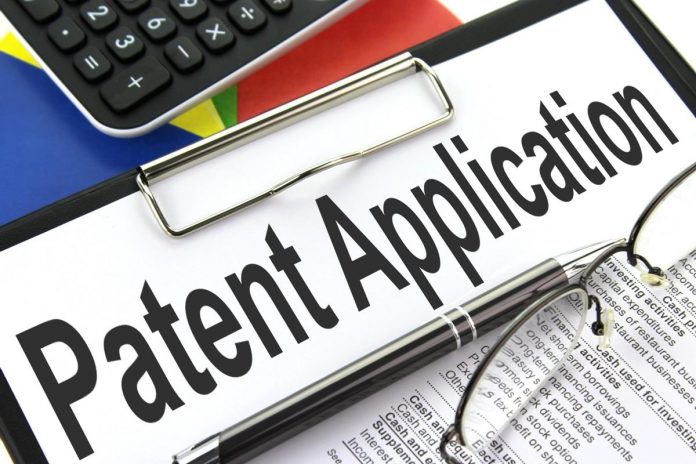This article has been written by Adv. Rashi Chandok, working with QuickCompany. Giving a complete overview of the concept of patent, the article also describes the patent registration procedure in India, in comparison with the procedure in China and the USA.
It has been published by Rachit Garg.
Table of Contents
Introduction to patents
The word ‘patent’ is derived from the Latin word “patere” which means “to lay open” which refers to make available for public inspection. In the current context, a patent is a privilege awarded to anybody who invents anything novel, valuable, and non-obvious. On 20th April 1972, the Patents Act, 1970 and the Patents Rules, 1972 entered into force, replacing the Indian Patents Act and the Designs Act, 1911. In order to strengthen patent law and come in league with the modern world, India became a member of the following foreign agreements and conventions:
- Trade-Related Intellectual Property (TRIPS) System,
- the Paris Convention,
- Paris Cooperation Treaty on 7th December 1998, and
- the Budapest Treaty on 17th December 2001.
Latest Amendments
The Government of India recently passed the Patents (Amendment) Rules, 2021, which decreased the charge for patent application and prosecution for academic institutions by 80%. Its main aim is to promote innovation and technological development. Patent registration is mandatory to protect the intellectual property or invention of the inventor.
Points to be noted
Fee reduction for all educational institutions
- A few educational institutions are into research activities, and they generate numerous new technologies which have to be patented for the commercialization of the same.
- It is to be noted that we must apply the innovations in the name of the educational institution, which has to pay the application fee for a number of applicants. As a result, it is very expensive and serves as a deterrent. Therefore, to promote such applications, they reduced the official fee of the application by 80% as per the Patent Amendment Rules, 2021 for all educational institutions.
- Earlier, the reduction was applicable to government-approved educational institutions.
Extension of Expedited Examination System
- An expedited examination procedure has been implemented, under which an application for patent award is granted within one year after filing such a request. This service is now available to eight additional types of patent applicants which was initially provided to only Startups.
- SME (Small and Medium Enterprises), Female applicants, Government Departments, Institutions created by a Central, Provincial, or State Act, Government Company, an institution fully or largely sponsored by the Government, and applicants under the Patents Prosecution Highway
- The Patent Prosecution Highway (PPH) is a collection of initiatives designed to speed up patent prosecution by exchanging information across patent offices.
Note:
- Patent Evergreening: It is a corporate, legal, commercial, and technological method for extending/lengthening the life of an issued patent in a jurisdiction that is about to expire in order to keep revenues from them by obtaining new patents.
- Section 3(d) of the Indian Patent Act, 1970 (as modified in 2005) prohibits patents from being awarded for inventions involving new forms of a recognised substance unless they differ considerably in effectiveness features.
- This implies that the Indian Patent Act does not permit patents to be renewed indefinitely.
- Compulsory Licensing (CL) is the government’s issuance of authorization to companies to use, produce, import, or sell a patented innovation without the approval of the patent owner. In India, the Patents Act addresses CL.
- CL is permitted under the WTO’s TRIPS (IPR) Agreement provided conditions such as ‘national emergencies, other circumstances of extreme urgency and anti-competitive practices’ are fulfilled.
What is a Patent?
A patent is a kind of intellectual property protection that the government provides to the inventor. It is an exclusive right awarded for an innovation, which is a product or a technique that offers a new way of doing something or an advanced technological solution to a problem.
Technical information concerning the innovation must be shared with the public in a patent application in order to get a patent.
What can be Patented?
There are a few exceptions to patentable items under Sections 3 and 4 of the Indian Patent Act, 1970 (“the Act”). It is important to know the criteria to determine what can be patented, and they are given here below:
Subject Matter is Patentable
First and foremost is determining whether the invention has patentable subject matter. As mentioned above, Sections 3 and 4 of the Act list out non-patentable subject matter; unless the invention falls under these sections, it can be patented.
Novelty
As per Section 2(l) of the Act, the term novelty is defined as any invention or technology that’s not been predicted by publication in any report or used in the country or elsewhere in the world prior to the date of filing of a patent application with complete specification, i.e., the subject matter has not fallen into the public domain or that it does not form part of state of the art. Novelty is an important factor in determining the patentability of an invention.
Inventive step or non-obvious
Section 2(ja) of the Patents Act defines inventive step as “a characteristic of an invention that includes technological advance as compared to existing knowledge or has economic relevance or both and that makes the invention not evident to a person versed in the art.” This implies that the innovation must not be evident to someone experienced in the field to which the invention pertains. It must be original and not evident to someone with similar knowledge.
Capable of Industrial Application
Section 2(ac) of the Patents Act defines industrial application as “the invention is capable of being manufactured or utilized in an industry.” This indicates that the innovation cannot exist in the abstract. It must be applied in any industry, which indicates that the innovation must be useful in order to be patentable.
Types of Patent Applications
An applicant can file two types of patent applications with the patent office, and they are as follows:
- Convention Application,
- Provisional Application,
- Ordinary or Complete Application,
- PCT International Application,
- PCT National Phase Application,
- Divisional Application, and
- Patent of Addition.
Convention Application
A convention application is to be filed by the applicant to claim a priority date on the basis of similar or identical applications filed in any of the convention countries. To get convention status, an applicant must file an application with the Indian Patent Office within one year after the date of the initial filing of an identical application in the convention nation. In simple words, a convention application grants the applicant preference in all convention nations.
Provisional Application
It is also known as a temporary application and is filed when the invention is under examination or incomplete. It is a kind of an application filed in the patent office to reserve a spot or give priority.
Ordinary or Complete Application
This kind of application is filed when the invention is complete; the applicant doesn’t have any priority to claim and has complete specifications. It can be filed through:
- Direct filing
- Subsequent filing
PCT International Application
It is a type of international application; however, it does not provide an international patent. It paves the way for a streamlined application process in many countries. It is governed by Patent Cooperation Treaty and is valid in up to 142 countries. Basically, it means that the application shall protect the invention from being copied in the given 142 countries.
PCT National Phase Application
It is mandatory for an applicant to file a national phase application for each country where protection is sought. The deadline for filing is 31 months from the priority date or the international filing date, whichever is sooner. Each member nation might increase the time limit through National Laws.
Divisional Application
If a given application claims for more than one invention, the applicant may opt to partition the application and submit two or more applications. These applications have the same priority date as the parent application.
Patent of Addition
This application must be submitted if the applicant learns that he has discovered an invention that is a minor modification of an invention that the applicant has already applied for or patented. This can only be filed if the invention does not need a significant inventive step.
Since a patent of addition is only issued after the parent patent is obtained, no additional renewal fee should be paid throughout the period of the primary patent. Furthermore, it should be awarded for the same duration as the patent for the primary invention and so expires concurrently with the main patent. The date of filing here shall be the date of filing of the application for patent of addition.
Process of Patent Registration in India
The process of registering a patent entails several steps, which are summarised below:
Step 1: To approach a professional
To protect your invention from being stolen or copied, the inventor must get its invention patented. It is advisable to seek assistance from a patent attorney to file a patent application. Given the number of deadlines, it is suggested that you engage a professional with patent expertise.
If you opt to hire a professional, make sure you sign an NDA (Non-Disclosure Agreement) with the patent specialist before disclosing any information about your idea.
Step 2: Patent Search
The first step after hiring a professional must be to conduct a patent search. It is essential to conduct a patent search before filing a patent application. It is often asked, “how to search patents or perform a patent search”. Performing a patent search can save your time and money by determining whether or not your innovation already exists. After doing a comprehensive patent search, you will be able to assess if your invention will infringe on the rights of other patents or whether it would invalidate a competing patent. Once Patent Search is complete, an applicant must generate a user id and password in order to apply online.
Note: A patent registration in India is only applicable in India. Patent registration guards your idea solely in India and no other nation. On the contrary, you may also be able to protect your innovation in other nations. A separate patent registration application must be filed in each nation for this purpose.
Step 3: Drafting a Patent Application
Form 1 & Form 2 also known as the Indian Patent Application Form and the patent specification form respectively must be completed and submitted. Depending on which Indian state you live in, you must file either a provisional or a full patent application.
It is advisable to file a provisional application if the invention is still in the development phase, as this will prevent the filing date from changing. The applicant has 12 months to file the whole specification, which provides the applicant with plenty of time to test and finalize your innovation.
A patent application is divided into three parts:
- Abstract
- Specifications
- Claims
The end goal of writing a claim is to define the innovation covered by the patent. The reason a patent agent or attorney begins with claims is that once we have a complete set of claims that provide appropriate protection to the invention and are approved by you (inventor), writing the remaining parts of the patent application, such as the detailed description, abstract, and summary, gets easier because these parts generally follow the boundaries set by claims.
Once the application is complete, the authorized patent agent or attorney applies to the patent office in India.
Step 4: Publication of the Patent Application
Every application shall be published in the official journal only after the 18th month from the date of filing or the date of priority, whichever is sooner. Indian patent applications might be published early if a formal request is submitted.
Step 5: Examination of Patent Application
Once the Patent Application is submitted with the patent office in India, the authorities will examine the application. The patent will be awarded if the innovation is unique and meets the conditions for patentable invention.
Step 6: Objection raised
The examiner has the authority to raise objections while examining the patent application. On the basis of the application, the examiner issues a patent examination report stating the objections related to the patent application.
Step 7: Reply to the objection
Once the examiner issues the patent examination report, the applicant must file a reply for the same stating clarification to the examiner’s doubts.
The maximum time allowed to respond is six months from the First Examination Report’s issuance date. However, it might extend this time for another three months by submitting a request to the Indian Patent Office (IPO).
Step 8: Grant of Patent
Once the application has overcome all of the examiner’s objections, the patent office will issue the applicant a patent. After the patent is awarded, the IPO publishes the patent in the patent gazette. Finally, the process of patent registration is complete, and the patent is granted for the next 20 years.
Comparisons with China and the US
According to the survey, the number of patents awarded in India remains a fraction of that in China, the United States, Japan, and South Korea. Though the number of patents registered in India has increased significantly, according to the World Intellectual Property Organization (WIPO), it is still a fraction of the 5.30 lakh patents issued in China and the 3.52 lakh patents granted in the United States, according to the Economic Survey.
As per the survey, this difference is due to India’s low R&D spending, which was 0.7 percent of the country’s GDP in 2020. Other obstacles that have discouraged people from filing patents in India include procedural delays and complexity.
The survey further shows that the average period for a final decision on patent granting in India in 2020 was 42 months, dropping from 52 months in 2019 and 64 months in 2017. However, this remained significantly greater than the 20.8 months taken in the United States, 20 months in China, 15.8 months in South Korea, and 15 months in Japan.
Students of Lawsikho courses regularly produce writing assignments and work on practical exercises as a part of their coursework and develop themselves in real-life practical skills.
LawSikho has created a telegram group for exchanging legal knowledge, referrals, and various opportunities. You can click on this link and join:
Follow us on Instagram and subscribe to our YouTube channel for more amazing legal content.












